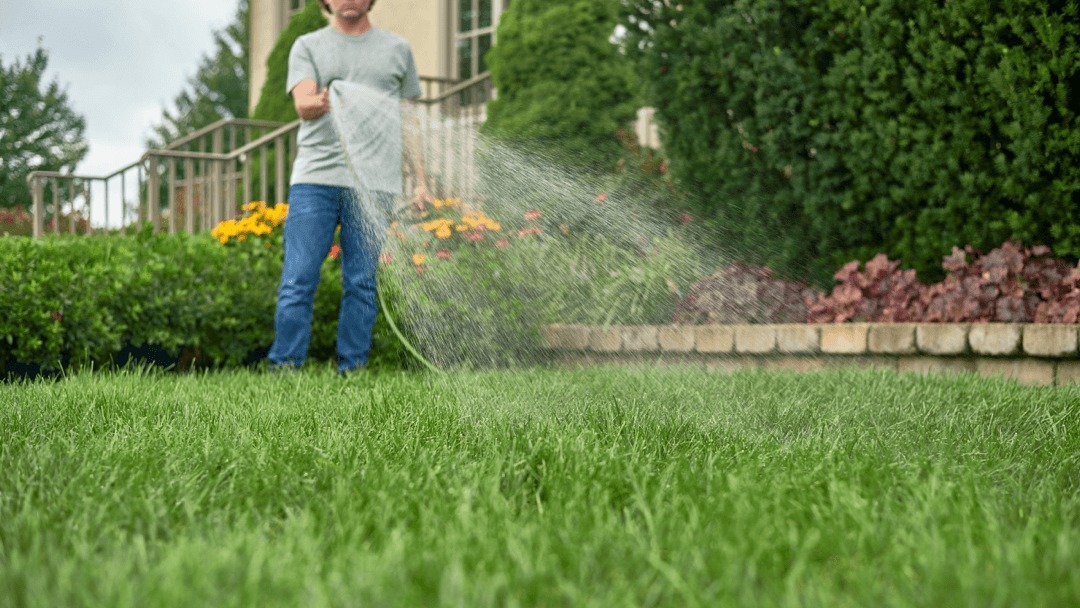Ever find yourself enviously staring at your neighbor’s vibrant, green lawn and wondering why yours doesn’t look as lush? Well, wonder no more! In this article, we’ll reveal 13 possible reasons why your neighbor’s yard may be greener, from automated irrigation systems to pet-related factors. Get ready to uncover the secrets to a greener lawn!
Mastering Proper Watering Techniques
One of the keys to achieving a lush green lawn, like your neighbor’s, is to water it properly. Instead of frequent shallow watering, opt for infrequent but deep watering sessions to promote healthy root growth.
Aim to water your lawn with 1 to 1.5 inches of water per week, preferably in the early morning to avoid evaporation from the scorching sun. Avoid watering in the evening as it can create a moist environment prone to diseases.
Using a sprinkler with a wide coverage area ensures even watering of all lawn areas. For added convenience, consider installing an automated irrigation system to regulate watering timing, minimize water runoff, and free up your mornings from manual watering tasks. Get ready to level up your watering game and achieve a greener lawn!
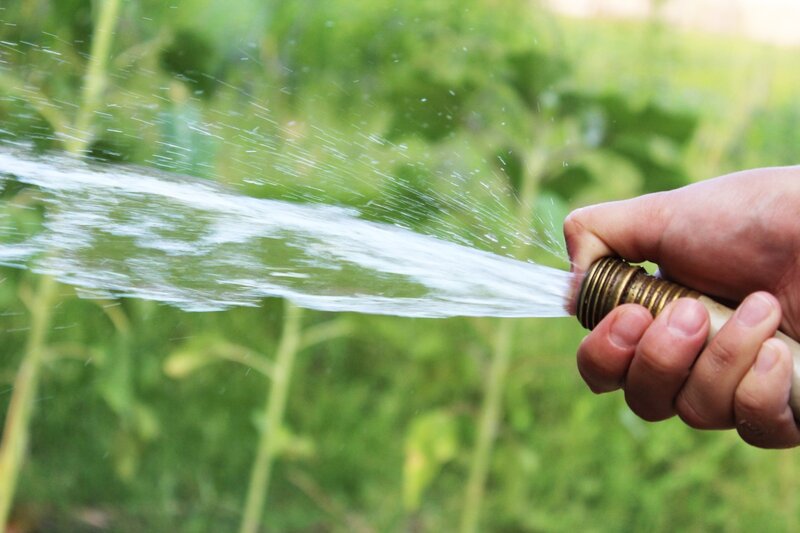
Understanding Different Grass Types
Don’t fret if your neighbor’s grass appears greener, as it could simply be due to having a different type of grass with distinct characteristics and growth patterns.
Various grass varieties exhibit different shades of green, heights, and growth habits. Some grasses tend to grow tall and lush, while others are short and dense. Hence, even if you follow the same lawn care routine as your neighbor, you may not achieve identical results.
Grass types generally fall into two categories: warm-season and cool-season grasses.
Warm-season grasses thrive in hot temperatures and actively grow during summer, commonly found in Southern states. They enter dormancy in late autumn and green up in spring.
On the other hand, cool-season grasses prefer colder temperatures and actively grow during spring and fall, commonly found in Northern states. They enter dormancy in the summer and during freezing winters.
If you live in the transition zone, which lies in the middle of the country, you may have both warm and cool-season grasses. So, if you’re wondering why your neighbor’s lawn is greener in the summer while yours isn’t, it’s likely due to them having warm-season grass, while you have cool-season turf. Understanding the grass types in your region can help you better manage and care for your lawn for optimal results.
Proper Mowing Techniques Matter
Your neighbor’s lawn may be greener due to their adherence to professional mowing methods. While it may be tempting to mow your lawn short to prolong the time between mowings, this practice can actually stress the grass.
Your neighbor is likely following the one-third rule: avoiding mowing more than one-third of the grass blade’s height in a single mow. For instance, if your grass is 3 inches tall, you should not set your mower to cut off more than 1 inch, as scalping the turf can occur.
Additionally, your neighbor may keep their mower blades sharp. Dull blades can tear up more grass blades, leave a rough finish, and increase the lawn’s susceptibility to disease. Therefore, it’s crucial to ensure your mower blades are sharp before mowing for optimal results. Proper mowing techniques can contribute to a healthier, greener lawn.
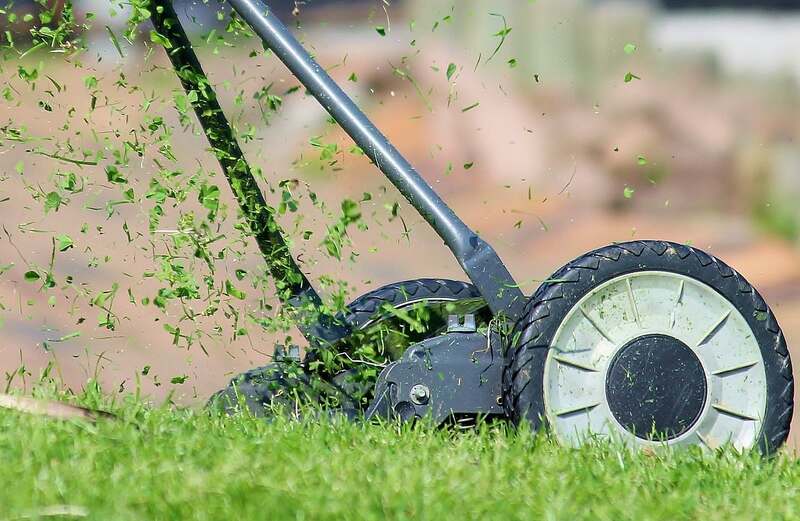
Winning the Battle Against Weeds
One reason your neighbor’s lawn may be greener is because they effectively control weeds. Weeds can be a nuisance for any lawn owner as they compete with grass for water and nutrients, hindering a healthy lawn. Common lawn weeds include crabgrass, dandelions, and chickweed.
Here are some methods to combat weeds:
- Pre-emergent herbicides: These weed killers are applied to the soil before weeds germinate, preventing their growth.
- Post-emergent herbicides: These are used after weeds have sprouted, quickly killing them to prevent further spread in the yard.
- Manual removal: Digging up weeds with a garden fork or hand trowel can be a chemical-free method of weed control, ensuring the entire root system is removed.
- Horticultural vinegar: Spraying weeds with horticultural vinegar can also be effective, but care must be taken to avoid spraying the grass blades.
By effectively managing and controlling weeds, your neighbor may have a greener lawn with healthier grass that is not competing with invasive weeds for essential resources.
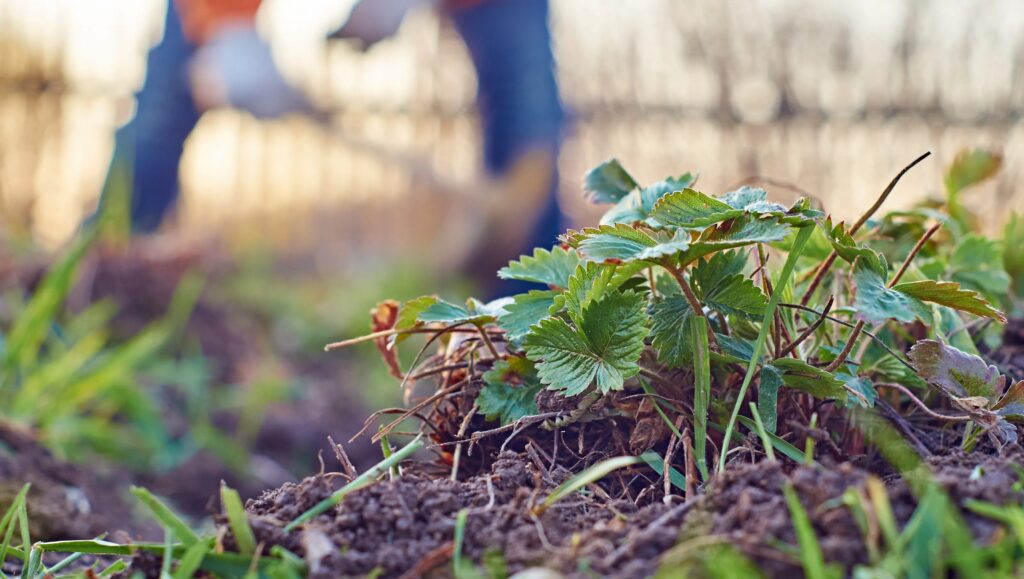
Feeding Your Lawn: The Power of Fertilization
Your neighbor’s lush green lawn may be the result of regular fertilization. Just like any other plant, your lawn requires essential nutrients such as nitrogen, potassium, and phosphorus to thrive. If your lawn lacks these nutrients, it may not be as green as your neighbor’s.
There are two common forms of lawn fertilizers: liquid and granular. Liquid fertilizers are easily absorbed but need to be applied more frequently as they don’t last long. On the other hand, granular fertilizers are slow-release, providing nutrients over a longer period of time, although they may take longer to show results.
The timing of fertilization also matters. For warm-season grasses, the best time to fertilize is in late spring through summer, while for cool-season grasses, fall is the ideal time.
Regular fertilization can help ensure that your lawn has the necessary nutrients for healthy growth, resulting in a greener and more vibrant lawn, just like your neighbor’s.
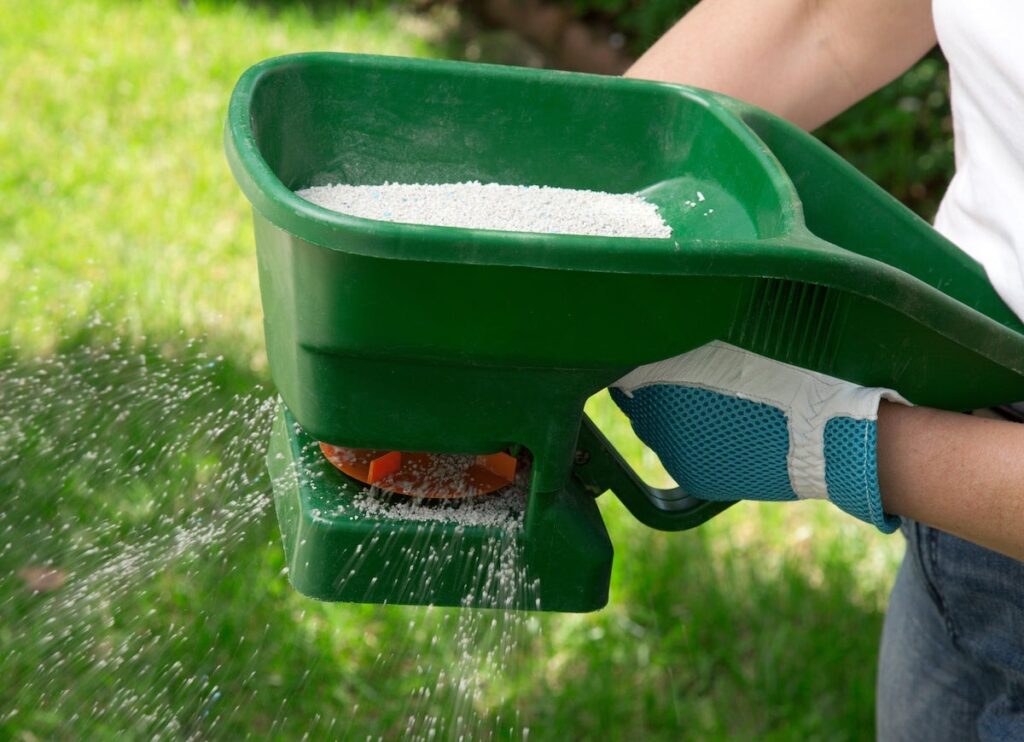
Pet-Friendly Lawn Care: Keeping Dog Pee Off Your Lawn
As much as we love our furry friends, dog pee can be detrimental to a healthy, green lawn. Dog urine contains high levels of nitrogen, which can result in brown patches or even kill the grass.
If you’ve noticed brown patches on your lawn where your dog often pees, it’s important to take action. One option is to train your dog to avoid peeing on the grass. If that’s not effective, you can try washing out the area with water immediately after your dog does their business to dilute the nitrogen and minimize damage to the grass.
By taking steps to prevent dog pee from damaging your lawn, you can maintain a greener lawn and keep both your dog and your lawn happy and healthy. Your neighbor may be avoiding this issue, which could be contributing to their lush, green lawn.
Mulching: A Simple Lawn Care Technique for a Healthier Lawn
One effective lawn care technique that your neighbor may be using is mulching. Mulching involves adding organic material to the soil, which can improve soil nutrition, protect against dehydration, and prevent weed growth.
You can easily incorporate mulch into your lawn care routine by using grass clippings instead of disposing of them. Special blades can be attached to your lawn mower to chop up the grass into smaller pieces and distribute them across your yard. Over time, these clippings will decompose, providing irrigation and nutrients to your lawn.
Another option is to mulch leaves by mowing over them multiple times and spreading them in a thin layer on your yard. Shredding the leaves into small pieces (around ½ inch in size) is important to prevent them from blocking sunlight and oxygen from reaching the soil.
By adding mulch to your lawn, you can promote a healthier lawn with improved soil quality, reduced weed growth, and better moisture retention. Your neighbor’s lawn may be benefiting from this simple yet effective technique, contributing to its lush appearance.
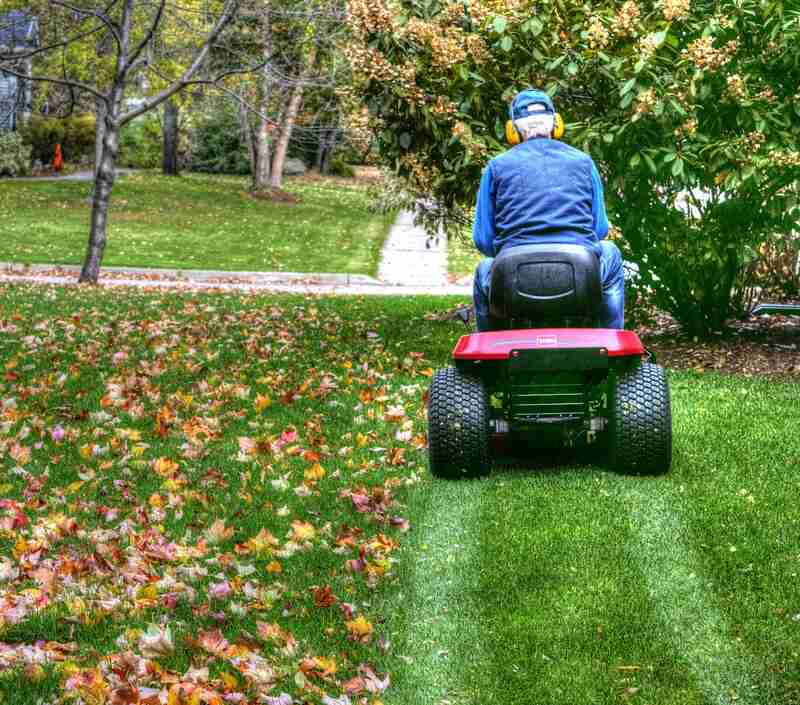
The Benefits of Lawn Aeration: Improving Soil Health for a Lush Lawn
Aeration is a lawn care practice that your neighbor may be using to maintain a healthy and lush lawn. Aeration involves creating small holes in the soil to alleviate compaction, allowing better penetration of oxygen, water, and nutrients to the grass roots.
You can determine if your lawn needs aeration by performing a simple screwdriver test. Insert a screwdriver into the soil. If it goes in easily without much resistance, your soil may not require aeration. However, if it’s hard to push in, it’s likely that your lawn could benefit from aeration.
The best time to aerate your lawn depends on the type of grass you have. For cool-season grasses, early spring to fall is ideal, while for warm-season grasses, late spring to summer is recommended. Aerating during the grass’s active growing period can help promote healthy root growth and overall lawn health.
By aerating your lawn, you can improve soil health, reduce compaction, and allow for better uptake of essential nutrients, resulting in a healthier and greener lawn. Your neighbor’s well-aerated soil may be contributing to their vibrant and thriving lawn.
The Importance of Dethatching for a Healthy Lawn
Thatch, the layer of organic matter between the soil and grass blades, can impact the health of your lawn. While a thin layer of thatch is normal and healthy, if it becomes thicker than one-half inch, it can pose problems for your lawn.
A thick layer of thatch can inhibit proper absorption of water, fertilizer, mulch, and other nutrients into the soil, leading to nutrient deficiencies and a lack of water penetration. It can also create a favorable environment for pests and diseases to thrive. Therefore, dethatching, or removing excess thatch, can be beneficial for a greener and more lush lawn.
Consider dethatching during the growing period of your turf, which is typically in early spring to fall for cool-season grasses and late spring to summer for warm-season grasses. Dethatching can help improve the health of your lawn by reducing thatch buildup and promoting better nutrient absorption and water penetration into the soil, resulting in a healthier and more vibrant lawn. Your neighbor’s practice of removing thatch may be contributing to their well-maintained lawn.
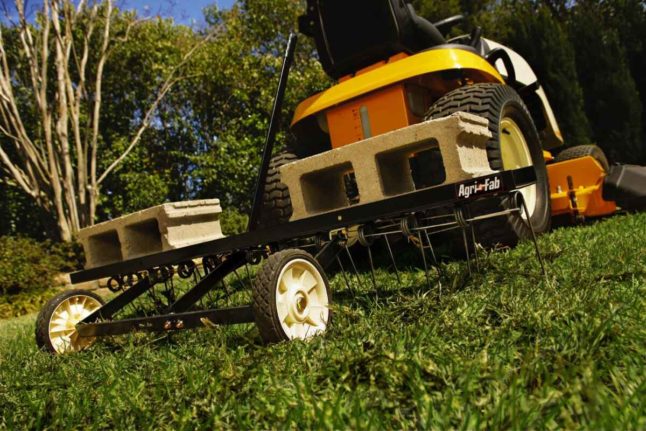
The Benefits of Overseeding for a Lush Lawn
If you’ve ever struggled with unsightly bald patches on your lawn while noticing that your neighbor’s lawn looks dense and green, it might be because they’re practicing overseeding.
Overseeding is the process of spreading grass seeds evenly across your lawn to encourage new growth and fill in thin areas. By overseeding once a year, preferably in spring for warm-season grasses or fall for cool-season grasses, you can prevent bald patches and promote a thicker, healthier lawn.
Grass plugs are another option for repairing bald patches. Grass plugs are individual turf plants grown in trays, and they can be planted directly into your lawn. They provide faster results compared to grass seeds, which may take longer to germinate. By practicing overseeding or using grass plugs, your neighbor may be effectively preventing bald patches and maintaining a dense and lush lawn.
Extending the Green Period of Your Lawn with Overseeding
If you’ve noticed that your neighbor’s lawn stays green during the winter despite having warm-season grass, it’s likely because they’re overseeding their lawn with cool-season annual or perennial ryegrass.
Warm-season grasses typically go dormant during the winter months, resulting in a brown lawn. However, by overseeding with cool-season grasses, such as annual or perennial ryegrass, your neighbor may be able to extend the green period of their lawn throughout the winter.
To achieve the same results, you can follow the same process and overseed your lawn with cool-season grass seeds. This can help you maintain a greener lawn during the winter months and enjoy a longer period of lush, green grass just like your neighbor.
Proactive Pest Management for a Healthier Lawn
One of the reasons why your neighbor’s lawn may look greener is because they take prompt action to get rid of pests as soon as they appear. By constantly monitoring their lawn for pests, they are able to identify any issues early on and take appropriate measures to keep pests at bay.
Dealing with pests can involve various methods, such as using pesticides or adopting a more holistic approach like Integrated Pest Management. However, the key is to keep a vigilant eye on your lawn for signs of pest infestation. Some common signs include brown patches or spots, ragged blades, bare soil patches, wilting grass blades, and discoloration of turf blades.
By staying proactive and taking swift action when pests are detected, your neighbor is able to maintain a healthier lawn with fewer pest-related issues. Follow their lead and keep a watchful eye on your lawn to tackle any pest problems early and ensure a greener, more vibrant lawn.
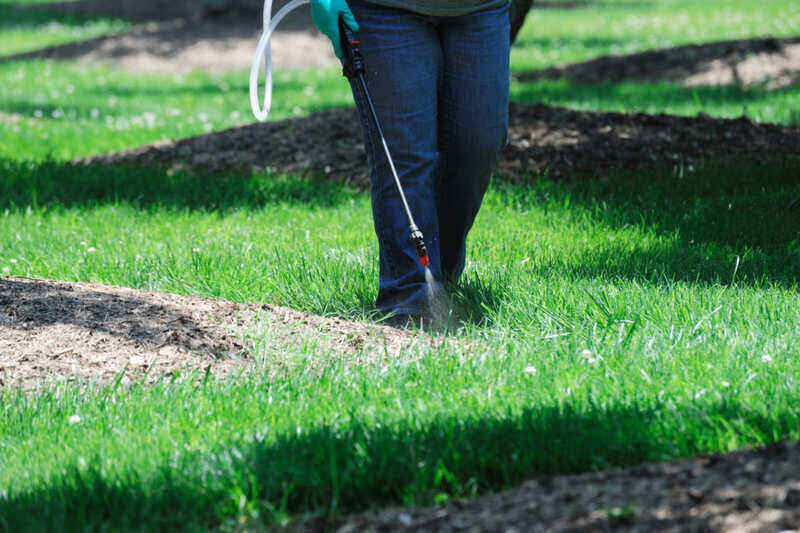
Seeking Professional Expertise for a Greener Lawn
Despite putting in effort and time into maintaining your lawn, you may still feel like your neighbor’s lawn looks greener and healthier. One possible reason could be that your neighbor seeks help from a lawn care professional to achieve optimal results.
A lawn care professional has expertise in the field and can provide specialized knowledge and services to ensure your lawn is in its best condition. They can offer guidance on proper lawn care practices, such as mowing, watering, fertilizing, and pest management, tailored to your specific lawn type and local climate.
By consulting with a local lawn care professional, you can gain valuable insights and receive personalized recommendations to enhance the health and appearance of your lawn. Their expertise and experience can help you achieve a greener, lusher lawn that you can be proud of. Consider reaching out to a lawn care professional to unlock the full potential of your lawn.

